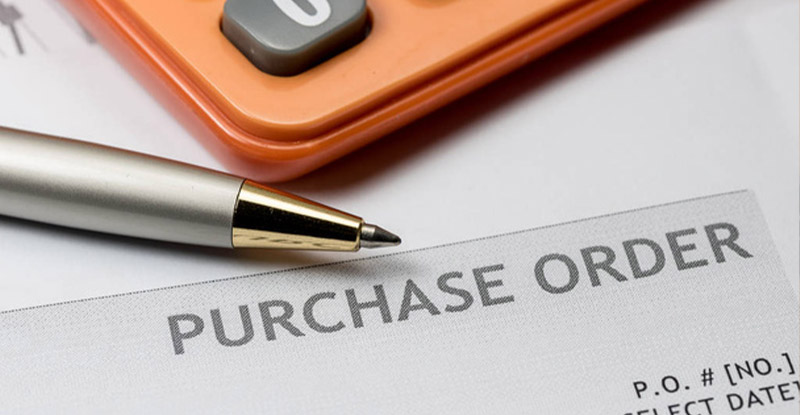Proforma Invoice vs. Purchase Order:
Meaning, Templates, When to Use


Understand the ins and outs of your financial transactions with our comprehensive guide comparing proforma invoices and purchase orders. Understand the meanings, access ready-to-use templates, and gain insights on when to employ each in your business. Enhance your transactional efficiency with our expert insights.
Navigating the world of invoices and purchase orders can be confusing, especially when terms like “proforma invoice” and “purchase order” get thrown around. Ever received a document labeled “proforma invoice” and blinked in confusion? Or maybe you’ve stared at a “purchase order” and wondered, “is this just a fancy receipt”?
We lay down the nuances between proforma invoices and purchase orders. In our article, we uncover the meanings, discover practical templates, and learn when to use each document for seamless transactions.
Clear the confusion and optimize your business processes. Here’s a breakdown of when to use each document and why — just read our article.

Unlock the power of automation and precision in creating proforma invoices. Say goodbye to manual errors and delays. Explore how InvoiceAction can transform your invoicing process, ensuring accuracy and efficiency every step of the way.
A proforma invoice, sometimes called a “pre-invoice” or “quotation invoice,” is essentially a preliminary bill of sale sent by a seller to a potential buyer. It outlines the estimated cost of goods or services before the actual sale and agreement have been finalized. Think of it as a detailed offer or proposal on paper.
Proforma invoice provides potential buyers with a cost estimate to aid in decision-making.
It facilitates secure financing arrangements by banks or lenders. Proforma invoice also supports customs clearance when importing goods.
Important to note that proforma invoice is not legally binding. It’s an agreement to negotiate towards a final contract. This type of invoice is issued before the goods are shipped or the service is rendered. However, proforma invoice can be turned into a commercial invoice once the terms of the sale are finalized.

Imagine you’re running a bakery and a new restaurant wants to order pastries from you. You send them a proforma invoice detailing the types of pastries, estimated quantities, and prices. This gives the restaurant an idea of the cost before they decide to commit to the order. If they agree, you then issue a commercial invoice after the order is placed, reflecting the final agreed-upon details.
RELATED: Manual Invoice Processing vs Automated Invoice Processing
This proforma invoice template provides a basic framework for your proforma invoice. You can adapt this proforma invoice template to suit your specific needs and business requirements.
Invoice No.: [Unique identifier for this invoice]
Date: [Date of issuing the proforma invoice]
Vendor (Seller):
Customer (Buyer):
Invoice Subject: Proforma Invoice for [Brief description of goods or services]
| Item No. | Description | Quantity | Unit Price | Total Price |
| 1 | [Item 1 name] | [Quantity of item 1] | [Price per unit of item 1] | [Total price for item 1] |
| 2 | [Item 2 name] | [Quantity of item 2] | [Price per unit of item 2] | [Total price for item 2] |
Payment Terms: Specify payment terms, e.g., net 30 days, upon delivery, etc.
Validity: This proforma invoice is valid for [Number] days from the date of issue.
Additional Information:
Important things to remember:
Discover Effortless Proforma Invoicing with Artsyl!
Experience the ease of generating proforma invoices with Artsyl InvoiceAction. From dynamic templates to intelligent data extraction, we’ve got you covered. Boost your workflow efficiency and impress clients with the precision of Artsyl’s advanced automation.
Book a demo now
A purchase order (PO) is like a handshake in the business world – it’s the official confirmation from a buyer to a seller, saying “you got the deal, let’s do this!” Purchase order is a legal document issued by a buyer to a seller, detailing the agreed-upon purchase of goods or services.
Think of a purchase order as a formal “go ahead” with everything spelled out: quantities, prices, delivery dates, payment terms, and more. It helps track and manage internal purchasing processes, avoiding confusion and ensuring the seller has all the information needed.
Purchase orders are used once the terms of a sale are finalized, and both parties are ready to commit.
Purchase orders are legally binding documents, so ensure all details are accurate and complete. Both buyer and seller should receive and retain copies for reference. Effective communication and clear terms are crucial for avoiding any snags in the process.
With this understanding of purchase orders, you can navigate the world of business transactions with confidence and ensure every handshake translates into a smooth and successful collaboration.

Contact Us for an in-depth
product tour!
This purchase order template provides a basic framework for your purchase order. You can adapt this simple purchase order template to suit your specific needs and business format.
Purchase Order No.: [Unique identifier for this order]
Date: [Date of issuing the purchase order]
Buyer:
Supplier (Seller):
| Item No. | Description | Quantity | Unit Price | Total Price |
| 1 | [Item 1 name] | [Quantity of item 1] | [Price per unit of item 1] | [Total price for item 1] |
| 2 | [Item 2 name] | [Quantity of item 2] | [Price per unit of item 2] | [Total price for item 2] |
Delivery Information:
Payment Terms
Specify payment terms, e.g., net 30 days, upon delivery.
Special Instructions
Include any additional instructions for the supplier, such as packaging requirements, labeling specifications, or quality control measures.
Terms and Conditions
Specify any relevant terms and conditions governing the purchase, such as warranty information, return policy, or dispute resolution procedures.
Approved by
Add a printed name and signature of authorized buyer representative.
Key things to remember
Supercharge Your Purchase Orders with Artsyl OrderAction!
Elevate your procurement game with OrderAction’s cutting-edge capabilities. Streamline your purchase order creation process, reduce bottlenecks, and enhance collaboration. Unleash the potential of automation for seamless, error-free transactions.
Book a demo now
Proforma invoice comes first, then you use purchase order. Think of it as a two-step dance. The proforma paves the way, the purchase order seals the deal. There’s one exception: If you’re dealing with readily available, low-cost items, and the terms are straightforward, a purchase order might suffice without a proforma.
| Feature | Proforma Invoice | Purchase Order |
| Purpose | Quote, estimate | Contract, commitment |
| Origin | Seller | Buyer |
| Legality | Not binding | Binding contract |
| Timing | Before sale | After sale |
| Content | Estimated costs | Final terms and details |
| Modification | Can be revised | Typically fixed |
| Use in finance | Helpful for securing | Not typically used |
| Use in customs | Required for clearance | May be requested |
Both documents play crucial roles in the purchasing process, but choosing the right one ensures smooth transactions and avoids confusion. Choose the document that best aligns with the stage of the transaction and your specific needs. Remember, clear communication between buyers and sellers is key!
Transform Purchase Orders into a Breeze with Artsyl!
Tired of the complexities in creating purchase orders? Look no further! Artsyl OrderAction brings simplicity and accuracy to your procurement process. Take command of your transactions and watch your efficiency soar with this game-changing solution.
Book a demo now
A proforma invoice is a preliminary bill of sale sent to the buyer by the seller before the actual shipment of goods. It outlines the details of the agreed-upon transaction, including the description of the products, quantity, price, and any other relevant terms. While it serves as a commitment from the seller to provide the goods or services, a proforma invoice is not a legally binding document for payment.
A purchase order (PO) is a formal document issued by a buyer to a seller, indicating the buyer’s intent to purchase specific products or services. It includes details such as product descriptions, quantities, agreed-upon prices, delivery dates, and payment terms. Unlike a proforma invoice, a purchase order is a legally binding agreement, and upon acceptance by the seller, it forms the basis for the contract between the two parties.
Creating a proforma invoice involves detailing the products or services to be provided, specifying their quantities and prices, and including any relevant terms. It is typically formatted similarly to a final invoice but explicitly marked as “proforma” to indicate its preliminary nature.
A proforma invoice example is a pre-designed format that simplifies the process of creating proforma invoices. It includes placeholders for essential information such as item details, quantities, prices, and payment terms. Using a template streamlines the invoicing process and ensures consistency.

The primary purpose of a proforma invoice is to provide the buyer with a preview of the anticipated costs and terms associated with a potential transaction. It helps both parties understand the details of the proposed deal before the actual goods or services are delivered, facilitating transparency and preventing misunderstandings.
RELATED: What is an Invoice, and Why Is It Important for Businesses?
The main difference lies in their legal status. A proforma invoice is a preliminary document issued before the completion of a transaction, serving as a quotation or agreement. In contrast, a commercial invoice is a legally binding document provided after the sale, indicating that the goods or services have been delivered.
Generating a purchase order involves creating a document that formally requests goods or services from a vendor. It includes details such as the type and quantity of items, agreed-upon prices, delivery dates, and terms of payment. Purchase orders are crucial for tracking transactions and maintaining accurate records.
The purchase order format is the structured layout of the document used to request goods or services from a supplier. It typically includes information such as the buyer’s and seller’s details, a unique purchase order number, item descriptions, quantities, unit prices, total amounts, delivery instructions, and payment terms. The format ensures clarity and consistency in communication between buyer and seller.
Say Goodbye to Manual Hassles with Artsyl’s Solutions!
Artsyl’s InvoiceAction redefines how you handle proforma invoices and purchase orders. Embrace the future of automation, eliminate errors, and accelerate your business processes. Unleash the potential of Artsyl’s advanced capabilities today!
Book a demo now
Navigating the world of proforma invoices and purchase orders no longer needs to be a mystery. This blog has unraveled their tangled meanings, illuminated their distinct purposes, and even provided you with the tools to craft your own. By understanding these crucial documents, you’ll streamline transactions, avoid confusion, and boost your business acumen. So, say goodbye to invoice ambiguity and hello to a world of clear communication and confident commerce!
A proforma invoice is a preliminary bill of sale provided to buyers before the actual delivery of goods or services. It outlines details such as item descriptions, quantities, prices, and terms, serving as a preview of the transaction.
Proforma invoices are commonly used in international trade to inform buyers of the costs associated with a transaction before the goods are shipped. They are also used in scenarios where a formal invoice is not yet required. A proforma invoice is not a legally binding document. It is a provisional agreement that provides clarity on the terms and conditions of a potential transaction.
The main difference lies in legality. A proforma invoice is not legally binding, serving as a quotation, while a commercial invoice is a formal, legally binding document issued after the completion of a sale.

A purchase order is a formal document issued by a buyer to a seller, outlining the details of the products or services to be purchased. It includes information such as quantities, prices, delivery dates, and payment terms. Purchase orders provide clarity and documentation for transactions, reducing the risk of misunderstandings between buyers and sellers. They also help in tracking orders, managing inventory, and maintaining accurate records.
Yes, purchase orders can be modified, but any changes should be agreed upon by both the buyer and the seller. It’s important to communicate and document any modifications to avoid disputes. A purchase order is a legally binding document that formalizes the buyer’s intent to purchase goods or services from the seller. It creates an obligation for both parties to fulfill the terms specified in the order.